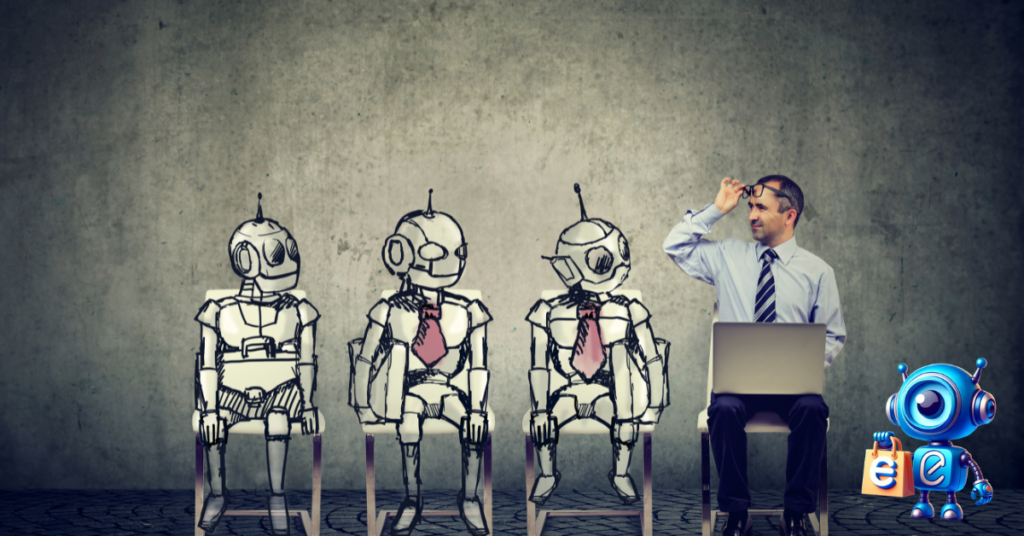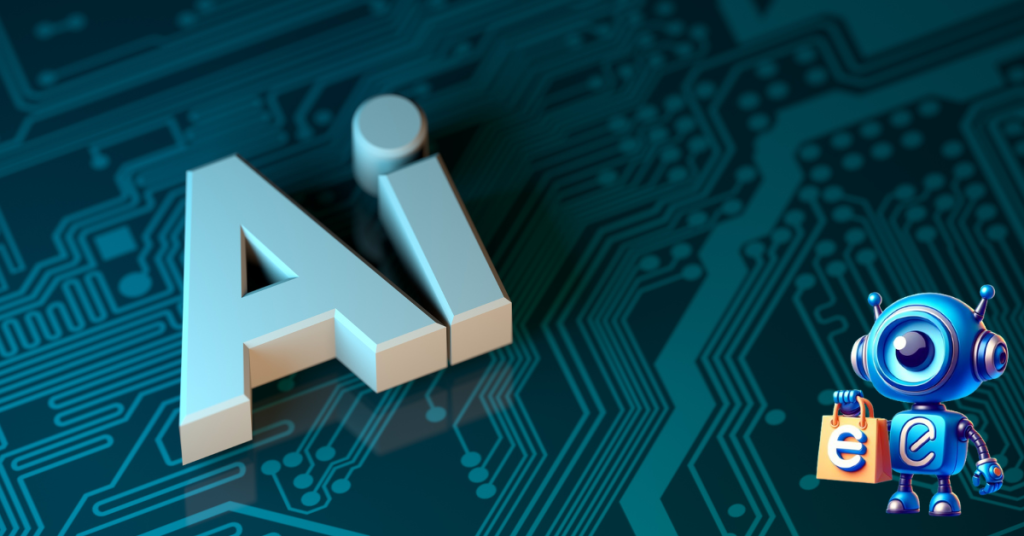Customer experience is the most essential part of the customer life cycle. A happy user is more likely to come back and consider your products and services over others.
According to a recent study by Zendesk, 3 in 4 consumers will spend more with businesses that provide good customer service.
It makes it imperative for any excellent e-commerce business to provide the best customer experience possible.
The customer life cycle starts with Reach and ends with Loyalty, and through all these stages, customer service is involved.
So, you want to establish a customer service system that ensures customer queries are resolved and proactively probed for queries.
The usual way towards this was continuous contact between business representatives and customers through a call or live chat.
However, the market has pivoted towards a better, more efficient solution that can do the heavy lifting in customer service and let the representatives focus their work on other requirements.
We are talking about chatbots. Chatbots are computer programs that simulate user conversation, typically through text or voice interactions.

They use artificial intelligence (AI) and Natural language processing (NLP) to understand and respond to user queries, provide information and assistance, or perform specific tasks.
So, today, we dive deep into chatbots and see their advantages over live chat and how to choose a chatbot for your e-commerce business.
Table of Contents
Understanding Chatbots
Chatbots have emerged as a powerful tool, revolutionizing how we interact with machines and access information. These conversational agents are not just a part of science fiction; they are increasingly becoming integral to our daily lives. This blog article will explore the definition of chatbots, their functionality, applications, and impact on various industries.
A chatbot is a computer program designed to simulate conversation with human users, especially over the internet. The goal is to provide an interactive and user-friendly experience, allowing individuals to obtain information, perform tasks, or even engage in casual conversation through a chat interface.
According to a recent Juniper Research, chatbots are expected to save businesses up to 2.5 billion hours of work by 2024. Therefore, it is time for your business to adopt a chatbot to optimize customer experience and sales.
Chatbot vs Live chat: Comparison
Each vying for the role of the ultimate conversational virtuoso – Chatbots and Live Chats are used to ensure an optimized customer experience. It’s a showdown between chatbots’ algorithmic precision and live chat’s human touch. As we explore ecommerce chatbots vs Live Chat, let’s unravel the intricacies of these conversational technologies and discover which contender steals the spotlight in the dynamic arena of online interactions.
Cost-effectiveness
One of the primary advantages of chatbots is their ability to handle a large volume of inquiries simultaneously without the need for additional human resources. Unlike live chat support, which requires a team of agents available around the clock, chatbots operate efficiently without incurring extra labor costs. This leads to significant savings for businesses, particularly e-commerce businesses, where high customer interaction frequency is the norm.
According to Outgrow, 57% of businesses state that chatbot usage results in a significant ROI with minimal investments. Thus, incorporating an ecommerce chatbot into your e-commerce business can increase revenue.
Service 24/7
Humans need to sleep; chatbots do not. You can be sleeping, and the chatbot will still indulge customers/potential customers on your behalf. Chatbots can provide continuous support 24 hours a day, seven days a week, without needing overtime pay or additional staff during off-peak hours.
This ensures that customer inquiries are addressed promptly, enhancing overall customer satisfaction.
Thus, an ecommerce chatbot can ensure that customers receive service and attention at all times, which ultimately contributes to improving the customer experience for the better.
Consistent Performance:
Once programmed, chatbots consistently execute predefined tasks and responses. This consistency eliminates the variability often associated with human agents, reducing the likelihood of errors and minimizing the need for extensive training and quality control measures.
According to Zendesk, 3 in 10 agents need help to access customer information, leading to irritated customers reliably. Thus, an ecommerce chatbot ensures that your e-commerce business doesn’t suffer due to human error and that the customer experience is optimized.
Scalability
Scaling the customer service for an e-commerce business involves hiring a team with different other resources. Through a chatbot, you can profoundly eliminate the logistics of onboarding new teams and equipment.
Ecommerce chatbots can quickly scale to accommodate increased customer interactions. Adding more chatbots to the system is often more cost-effective than hiring and training additional human agents.
All it takes is to incorporate more chatbots and expand the existing ecommerce chatbot’s functionality to consider the expanded capabilities.
Automation of Routine Tasks
Chatbots excel at handling repetitive and mundane tasks, such as providing standard information, answering frequently asked questions, or guiding users through routine processes.
By automating these tasks, businesses can significantly reduce the time and effort spent by human agents on routine queries, allowing them to focus on more complex and value-added customer interactions.
Ecommerce chatbots deliver consistent responses to routine queries, eliminating the variability that may arise from human agents. This ensures that customers receive accurate and standardized information, contributing to a cohesive and reliable customer experience.
Quick response times
Human operators can take time to respond to live chats, especially if the volume of customer queries is high. Chatbots are designed to process and respond to user queries instantly.
Even if the volume of customer queries is high.
Quick response times contribute directly to improved customer satisfaction. Customers appreciate swift assistance, and chatbots excel in providing timely and accurate information, resolving issues promptly, and facilitating a seamless user experience.
Quick response times enable businesses to streamline workflows and processes. As chatbots instantly handle routine and straightforward queries, human agents can focus on more complex issues, optimizing resource utilization and increasing overall operational efficiency.
Aren’t used that much
According to a recent Statista chatbots report, only 9% of online stores worldwide set up chatbots on their websites. Despite technological advancements, only some online stores have fully embraced chatbots for customer support.
This creates an excellent opportunity for your e-commerce business to stand out and implement it sooner than others.
Chatbots have already been proven to optimize customer experience over live chats. Implementing ecommerce chatbots would provide you an edge over your competitors.
How does E-commerce Bot AI fulfill all your chatbot needs?
With many ecommerce chatbot options available, selecting the right one for your specific requirements can be daunting. In this article, we explore how E-commerce Bot AI is transforming the online shopping experience and meeting the diverse requirements of modern businesses.
Personalized Customer Interaction:
E-commerce Bot AI excels in providing personalized interactions with users. By leveraging advanced algorithms and natural language processing, these bots can analyze user behavior, preferences, and purchase history to offer tailored recommendations and assistance. This level of personalization enhances the customer experience and increases the likelihood of conversions.
Seamless Integration with E-commerce Platforms:
One of the critical advantages of E-commerce Bot AI is its seamless integration with popular e-commerce platforms. Whether you’re using Shopify or another platform, our bot can effortlessly integrate with your system, providing real-time updates on inventory, order status, and product information.
24/7 Customer Support:
E-commerce Bot AI ensures round-the-clock customer support, addressing queries and concerns at any time of the day. This enhances customer satisfaction and contributes to building trust and Loyalty.
Customers can get instant assistance, track orders, and receive information without the limitations of human-operated customer support.
Order Processing and Tracking:
Automation is a cornerstone of E-commerce Bot AI and extends to order processing and tracking. Users can place orders, receive confirmation, and track their shipments seamlessly through the chat interface. This automation saves time and reduces the likelihood of errors in the order fulfillment process.
Proactive Customer Engagement:
E-commerce Bot AI is proactive in engaging users. Through targeted notifications, personalized offers, and order updates, these bots keep customers informed and engaged throughout their journey. This proactive approach contributes to a more dynamic and satisfying shopping experience.
Data Analytics for Business Insights:
These bots are equipped with robust data analytics capabilities. Businesses can gain valuable insights into customer behavior by tracking user interactions, preferences, and buying patterns. This data-driven approach enables enterprises to make informed decisions, refine their marketing strategies, and optimize the customer experience.
Multi-Platform Accessibility:
E-commerce Bot AI is designed to be accessible across multiple platforms, including websites, mobile apps, and social media channels.
This versatility ensures businesses can reach and engage customers on their preferred platforms, creating a cohesive, omnichannel experience.
Continuous Improvement through Natural Language Processing (NLP) :
The learning capabilities of natural language processing algorithms enable us to improve and adapt E-commerce Bot AI consistently.
As the bot interacts with users and receives feedback, it refines its responses and recommendations, ensuring an evolving and intelligent customer support system.
User Interface and User Experience:
A user-friendly interface is crucial for a positive user experience. The ecommerce chatbot should be intuitive and easy to navigate, ensuring users find value in their interactions without frustration.
The UI of the e-commerce Bot AI is intuitive and user-friendly. Users can navigate the bot effortlessly, access information, and create new functions.
Clear, concise, and visually appealing design elements contribute to a favorable UI.
The Synergy between chatbot and live chat
While chatbots will replace live chat completely, the ecommerce chatbot’s function optimizes the interaction between the business and the customer. The synergy between chatbot and live chat creates a powerful and dynamic customer engagement strategy.
By leveraging both strengths, companies can provide efficient, personalized, round-the-clock support, ensuring users receive the best automated and human-assisted interactions.
This collaborative approach elevates customer satisfaction and positions businesses at the forefront of delivering exceptional customer experiences.
Read Also:
- How To Start An Ecommerce Business With No Money
- How To Start An Ecommerce Business With No Money
- How Does Shopify Work: Guide Selling On Shopify
Understanding the Dynamics:
At the core of the synergy between chatbots and live chat is the recognition of their respective strengths. Ecommerce chatbots excel in handling routine queries, providing instant responses, automating repetitive tasks, and overall doing the heavy lifting involved in customer service.
On the other hand, live chat brings the human touch, offering personalized interactions, empathy, and complex issue resolution.
Chatbots shine when it comes to immediate responses. They can instantly address frequently asked questions, guide users through basic processes, and provide information on products or services in a clear, concise manner.
24/7 Availability:
One of the standout features of ecommerce chatbots is their round-the-clock availability. They tirelessly handle inquiries anytime, ensuring users receive assistance outside regular business hours.
This availability caters to global audiences, different time zones, and users who prefer to engage at unconventional hours. This speed enhances customer interaction efficiency, satisfying users with swift and accurate responses.
Human Touch and Empathy with Live Chat:
While ecommerce chatbots excel in efficiency, live chat introduces the human touch. Live chat agents intervene when situations require empathy, understanding, or a nuanced response.
They can handle complex queries, provide emotional support, and tailor their responses to individual users’ needs and concerns.
The synergy between chatbot and live chat is exemplified through seamless handovers. When a chatbot encounters a query beyond its capabilities or when a user requests explicitly human assistance, the conversation smoothly transitions to a live chat agent. This ensures a continuous and uninterrupted user experience.
Personalized Engagement:
Live chat agents bring a personal touch to customer interactions by recognizing individual needs and preferences. They can access customer history, provide tailored recommendations, and engage in meaningful conversations beyond automated responses’ capabilities.
Live chat is invaluable when dealing with intricate issues that require human intuition and problem-solving skills. With live agents, businesses can address complex scenarios, resolve unique challenges, and maintain high customer satisfaction in situations beyond an ecommerce chatbot’s capabilities.
Feedback and Continuous Improvement:
The interaction between chatbot and live chat also facilitates continuous improvement. Live chat agents can provide valuable feedback on user queries, allowing businesses to refine ecommerce chatbot responses, identify areas for enhancement, and ensure that the automated system evolves to meet user expectations.
Ultimately, the collaboration between chatbot and live chat is about maximizing efficiency and satisfaction. Chatbots handle routine tasks and inquiries swiftly, while live chat agents provide the human touch needed for complex scenarios, creating a harmonious and effective customer support ecosystem.
Final Word
The importance of choosing the right mix of chatbots and live chat for business needs must be balanced. The optimal blend depends on factors such as the nature of the business, customer expectations, and available resources.
Striking the right balance ensures efficiency, scalability, personalization, cost-effectiveness, and data-driven insights.
Ultimately, businesses that carefully assess their unique requirements and deploy a well-thought-out combination of chatbots and live chat are poised to deliver exceptional customer experiences while maximizing operational effectiveness in today’s competitive landscape.
FAQs
1. What is the primary difference between a chatbot and live chat?
A chatbot is an automated system powered by artificial intelligence that handles routine queries, while live chat involves real-time communication with a human representative to provide personalized assistance.
2. When is it appropriate to use an ecommerce chatbot?
Ecommerce chatbots are suitable for handling routine and frequently asked questions, offering instant responses, and streamlining processes efficiently. They are ideal for scenarios where quick, standardized answers are sufficient.
3. In what situations is live chat more beneficial?
Live chat is more beneficial in situations that require a human touch, empathy, and understanding. It helps address complex queries, build rapport with customers, and provide personalized assistance during critical stages of the customer journey.
4. Can an ecommerce chatbot replace human interaction entirely?
While ecommerce chatbots are excellent for automating routine tasks and handling common queries, they may need more nuanced understanding and empathy than human interaction provides.
Live chat is essential for situations that demand a personal touch and complex issue resolution.
5. How does E-commerce Bot AI contribute to efficiency in customer support?
E-commerce Bot AI contributes to efficiency by providing instant responses 24/7, handling a high volume of inquiries simultaneously, and freeing human resources for more complex issues. They also learn from interactions, improving their performance over time.
6. What role does cost play in choosing between chatbots and live chat?
Chatbots are cost-effective as they reduce the need for a large customer support team. However, live chat may incur higher costs due to human resource requirements. The decision depends on the balance between cost savings and the value of personalized assistance.
7. How can businesses determine the right mix of chatbots and live chat for their needs?
Businesses should assess the nature of their customer inquiries, the desired level of personalization, and budget constraints. Striking a balance between chatbots for efficiency and live chat for personalized interactions is essential for optimizing customer support.
8. Can live chat and chatbots be used together?
Yes, businesses often use a combination of both live chat and chatbots to leverage the strengths of each. Chatbots can handle routine queries, while live chat provides personalized assistance for complex issues, creating a comprehensive and efficient customer support system.
9. How can analytics be utilized in the decision-making process between chatbots and live chat?
Both chatbots and live chat systems generate valuable data. Analytics from chatbots provide insights into customer preferences, while live chat analytics offer real-time feedback. Businesses can use this data to make informed decisions and optimize customer support strategies.
10. Are there industries where chatbots or live chat are more commonly used?
Both chatbots and live chat find applications across various industries. AI chatbots are often prevalent in e-commerce, banking, and service-oriented sectors. At the same time, live chat is commonly used in industries where personalized assistance and human interaction are critical, such as healthcare and high-end retail. The choice depends on the specific needs of each sector.

